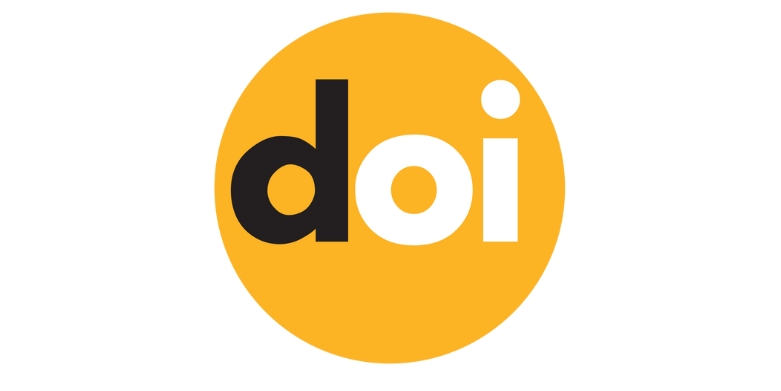Data Mining (Concepts, Algorithms) and Its Application to predict and Control Covid-19 Epidemic
DOI:
https://doi.org/10.63053/ijhes.6Abstract
In recent years, the issue of data mining has been considered by researchers due to the widespread access to large amount of data, the urgent need for information, proper, fast and accurate identification and diagnosis of various topics. Data mining discovers valid, fresh and useful patterns of available data which can provide valuable analytics for very large data sets. Today, the scope of its use has expanded and various data mining algorithms are used to identify and predict important issues in the field of health. The health sector is in the greatest need for data mining. The move from traditional medicine to evidence-based medicine is one of the things that can confirm this. In today's world, Covid-19 quickly hit other countries in addition to China like a hurricane, killing many people around the world. Due to the large amount of data in the field of medicine, the data mining process has played a very effective role in the management of various diseases such as prognosis, diagnosis and treatment. The main purpose of using data mining algorithms in medical sciences is to make better use of databases and discover hidden knowledge in order to help physicians make better decisions. The present article, which is prepared in a review manner using internet and library resources, tries to examine the concepts, data mining algorithms and their application in the field of health, especially to help diagnosing Covid-19. Finally, practical suggestions are provided.
References
Ahouz, F & Golabpour,A.(2021). Predicting the incidence of COVID-19 using data mining. BMC Public Health, 21:1087, https://doi.org/10.1186/s12889-021-11058-3.
Application of data mining in marketing. (2020) Available on:
Ara Research Center (1398). Artificial intelligence and its application in controlling the corona virus. Available on: https://iranthinktanks.com/artificial-intelligence-and-its-application-in-corona-virus-control
Awadh, W et al. (2021). Predictions of COVID-19 Spread by Using Supervised Data Mining Techniques. Journal of Physics: Conference Series. doi:10.1088/1742-6596/1879/2/022081.
Baskabadi, M. and Dostparast, M. (2020). Modeling and data mining of global data of Covid-19 virus patients. Iranian Journal of Emergency Medicine, Volume 7, Number 1, Article 40.
Ghasemi Tabaq, F et al. (1399). Psychological Impairments of New Coronavirus Disease. A Review Study. Rahyaft, No. 79.
Hai, L.(2021). Data Mining of Enterprise Financial Management Based on AHP. The 2nd International Conference on Computing and Data Science (CONF-CDS 2021). doi:10.1088/1742-6596/1881/4/042077.
Hashemi Foumani, M. and Motieian, H. (2020). Modeling the prevalence of super-acute Avian influenza in Guilan province with data mining models and spatial information system in 2016: An ecological study. Journal of Rafsanjan University of Medical Sciences, Volume 19.
Hamrahan soft (1396). Data mining and knowledge exploration. Available on:
https://www.hamrahansoft.ir/1396/09/20/891/
Jahani, A. (2020). The difference between machine learning and data mining. Available on: https://onlinebme.com/clearly-explained-how-machine-learning-is-different-from-data-mining
Khosravipour, A. (2009). Security applications of data mining and its techniques. Bachelor Thesis, Islamic Azad University, Central Tehran Branch.
Mirzakhani, F. et al. (2018). Comparison of Artificial Neural Network and Decision Tree Model to Identify and Predict Factors Related to Type 2 Diabetes. Mashhad Journal of Paramedical Sciences and Rehabilitation - Volume 7- Number 4.
Moghaddasi, H. et al. (2012). Data mining and its application in health. Health Information Management / Volume 9 / Number 2 .
Moradi, G and Ghasemi, V. (2012). Data mining technique and its application in social studies. Journal of Social Sciences, Faculty of Literature and Human resource, Ferdowsi University of Mashhad, Spring and Summer 2012, pp. 157-178.
Nopour et al. (2021). Proposing an effective technological solution for early detection of Covid-19 disease: A study based on data-driven machine learning. Journal of Modern Medical Information, Seventh Volume, First Issue.
Petrovic, n.(2021). Decision Support Based on Data Mining for Post COVID-19 Tourism Industry. XV International SAUM Conference.
Safdari, R.(2021). Using data mining techniques to fight and control epidemics: A scoping review. Health and Technology (2021) 11:759–771. https://doi.org/10.1007/s12553-021-00553-7.
Shanbehzadeh, M et al.(2021). Comparing of Data Mining Techniques for Predicting In-Hospital Mortality Among Patients with COVID-19. Journal of Biostatics and Epidemiology. 2021;7(2): 154-173
Tarokh, M. and Sharifian, K. (2007). Application of data mining in improving customer relationship management. Journal of Industrial Management Studies, Year 6, No. 17.
Downloads
Published
How to Cite
Issue
Section
License
Copyright (c) 2023 Authors

This work is licensed under a Creative Commons Attribution 4.0 International License.
The journal is licensed under a Attribution 4.0 International (CC BY 4.0).
You are free to:
- Share — copy and redistribute the material in any medium or format for any purpose, even commercially.
- Adapt — remix, transform, and build upon the material for any purpose, even commercially.
- The licensor cannot revoke these freedoms as long as you follow the license terms.
Under the following terms:
- Attribution - You must give appropriate credit , provide a link to the license, and indicate if changes were made . You may do so in any reasonable manner, but not in any way that suggests the licensor endorses you or your use.
- No additional restrictions - You may not apply legal terms or technological measures that legally restrict others from doing anything the license permits.












